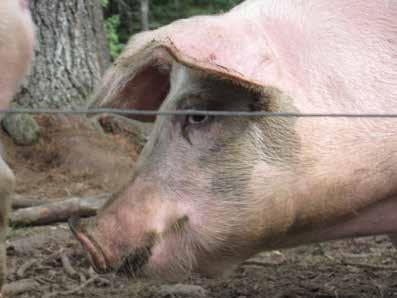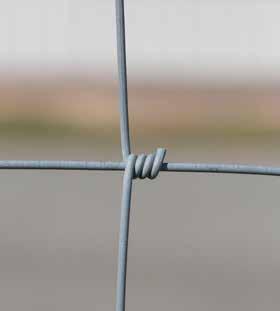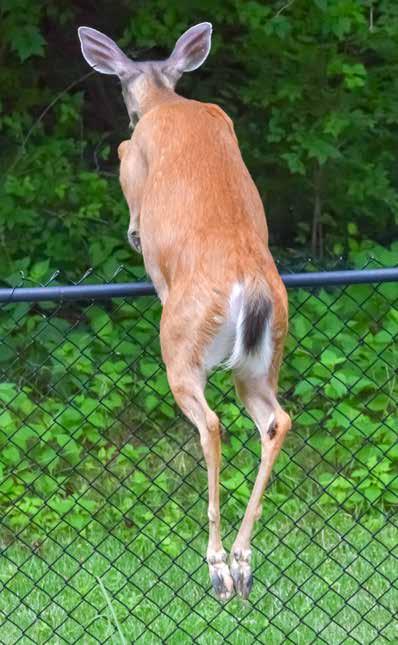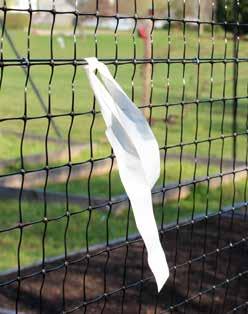
3 minute read
Using Deer Vision to your Advantage

HOGS
Two options work well for free-range hogs: 35-inch-tall, fixed-knot woven wire fence or three to four strands of smooth wire that are electric. Llamas If raising a herd of llamas, Sarson recommends a 4 to 5-foot high, woven wire, fixed-knot fence. However, Sarson also knows producers who run a few llamas with their sheep and have success using five or six strands of smooth wire with a few electric. “I don’t recommend barbed wire because you run into hide damage issues.”
DIVERSIFIED LIVESTOCK
“Believe it or not, there is a fence that will work to keep in a menagerie,” Sarson says. He explains the best option for a wide mix of animals is a fixed knot woven wire fence, 13 horizontal line wires, 48-inches tall and a 3 or 12-inch vertical (stay) wire. “Woven wire designs are best. They will save time and will cost less per foot.”
He also recommends buying fencing wire that is high-tensile. “Tensile strength is the resistance of steel or another material to break under pressure,” Sarson explains. “The higher tensile strength and smaller gauge results in a lighter yet stronger wire, which reduces cost-per-roll, risk of sag and the number of fence posts needed to complete the project.”
Sarson also recommends considering the protective wire coating for a fence’s longevity. “Coating durability depends heavily upon climate. In the Northeastern U.S. where I live, or in the Southeast, there is a lot of moisture and humidity in the air, as well as corrosive acid rain, so I suggest using the best coatings available. In the Midwest or West, where the climate is drier, a fence with a lighter coat weight may work as well as a heavier coating does in the Northeast. Remember, a Class 3 coating is three times heavier than a Class 1 coating.”
Visit www.bekaert.com to learn more and find more tips, techniques and fencing best practices on the link to their new YouTube channel.

Deer can be a nuisance in your yard or garden. A deer exclusion fencing solution can keep them out. In order for a deer fence to be effective, the fence has to be high enough, according to DeerBusters, an industry leader for deer fencing and garden fencing options across the United States. Deer are excellent jumpers and can clear a 7 ft. fence with ease. To combat this skill, an 8 ft. fence is recommended. The reason a tall fence is more effective for deer is based on how their eyes work. A deer’s eyes are positioned more on the side of their head, giving them a full 360-degree vision range compared to the 180-degree range of a human. While being able to see on all sides has its advantages, it also comes with a disadvantage – depth perception. Deer are not able to gauge how high something is due to their lack of depth perception. This provides an opportunity for deterring deer from jumping into your yard or garden. They will typically not want to risk injury by jumping without being able to judge the height. In this instance, deer would prefer to simply go around the obstacle. DeerBusters also recommends adding warning banners to make sure the deer notice the fence. Warning banners are a small piece of the prevention puzzle that may seem insignificant, but are very effective in alerting a deer to the presence of the fence. Deer have black and white vision so using a black or white banner to contrast the environment will make it more visible to the animal.











